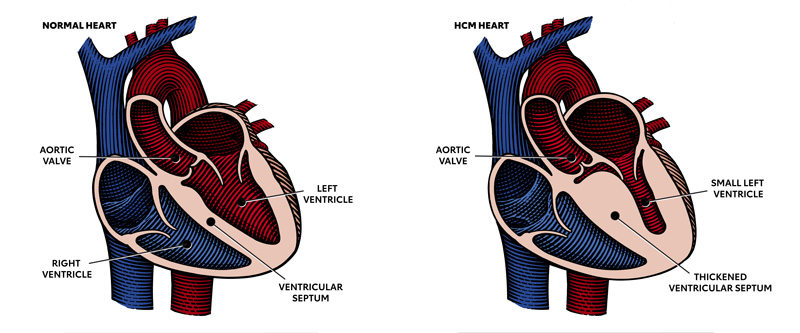Myocarditis is a complex and often insidious inflammatory condition affecting the heart muscle, or myocardium.
Understanding the stages of myocarditis is crucial for early detection, appropriate treatment, and prevention of potential complications such as heart failure or arrhythmias. This article delves into the pathophysiology, clinical presentation, and management strategies associated with the various stages of myocarditis.
What Are The Stages of Myocarditis
Stage 1: Acute Phase
Etiology and Pathophysiology
The acute phase of myocarditis is primarily characterized by the initial insult to the myocardium, often due to viral infections. Common causative agents include Coxsackievirus, Adenovirus, Parvovirus B19, and Influenza. During this phase, the virus directly invades the myocardial cells, leading to cell death and triggering the body’s immune response.
see also: Does The Flu Cause Myocarditis?
Clinical Presentation
Patients in the acute phase of myocarditis may present with nonspecific symptoms such as:
- Fever
- Fatigue
- Myalgias (muscle aches)
- Chest pain, often sharp and pleuritic
In more severe cases, symptoms may include:
- Dyspnea (shortness of breath)
- Palpitations
- Syncope (fainting)
- Signs of heart failure such as peripheral edema and orthopnea
Diagnostic Evaluation
Early diagnosis of acute myocarditis can be challenging due to the nonspecific nature of symptoms. Diagnostic tools include:
Electrocardiogram (ECG): May show nonspecific ST-T wave changes, atrial or ventricular arrhythmias, and conduction abnormalities.
Cardiac Biomarkers: Elevated levels of troponin and creatine kinase-MB (CK-MB) suggest myocardial injury.
Echocardiography: Can reveal reduced left ventricular ejection fraction (LVEF), regional wall motion abnormalities, and pericardial effusion.
Cardiac Magnetic Resonance Imaging (MRI): Provides detailed images of myocardial inflammation, edema, and fibrosis.
Management
Management of acute myocarditis focuses on symptomatic relief and supportive care. Treatment options include:
Anti-inflammatory Medications: Nonsteroidal anti-inflammatory drugs (NSAIDs) and corticosteroids to reduce inflammation.
Antiviral Therapy: In cases of viral myocarditis, although specific antiviral therapy is often not effective.
Heart Failure Management: Diuretics, ACE inhibitors, beta-blockers, and other heart failure medications for patients with reduced LVEF.
Stage 2: Subacute Phase
Pathophysiology
The subacute phase of myocarditis involves the immune system’s response to the initial myocardial injury. The ongoing inflammatory process can lead to further myocardial damage and remodeling, which can impair cardiac function.
Clinical Presentation
During the subacute phase, patients may experience persistent or worsening symptoms, including:
- Continued chest pain and fatigue
- Progressive dyspnea
- Palpitations and arrhythmias
- Signs of chronic heart failure
Diagnostic Evaluation
Diagnostic evaluation in the subacute phase includes:
Repeated Echocardiography: To monitor changes in cardiac function and structure.
Cardiac MRI: To assess ongoing inflammation and the extent of myocardial damage.
Endomyocardial Biopsy: In selected cases, to confirm the diagnosis and evaluate the extent of inflammation and fibrosis.
Management
Management in the subacute phase focuses on controlling the inflammatory response and preventing progression to chronic myocarditis. Treatment strategies include:
Immunosuppressive Therapy: Corticosteroids and other immunosuppressive agents may be used in autoimmune or immune-mediated myocarditis.
Antiarrhythmic Medications: To control symptomatic arrhythmias.
Ongoing Heart Failure Management: Continuation and optimization of heart failure therapy.
Stage 3: Chronic Phase
Pathophysiology
The chronic phase of myocarditis is characterized by the persistence of inflammation, leading to chronic myocardial damage, fibrosis, and remodeling. This can result in dilated cardiomyopathy and chronic heart failure.
Clinical Presentation
Patients in the chronic phase may exhibit:
- Persistent or worsening heart failure symptoms
- Exercise intolerance
- Ongoing arrhythmias
Increased risk of thromboembolic events due to impaired ventricular function
Diagnostic Evaluation
In the chronic phase, diagnostic evaluation focuses on assessing the extent of myocardial damage and functional impairment:
Echocardiography: To evaluate ventricular size, function, and the presence of fibrosis.
Cardiac MRI: For detailed assessment of myocardial fibrosis and scarring.
Endomyocardial Biopsy: To determine the extent of chronic iammation and fibrosis.
Management
Management in the chronic phase aims to prevent further myocardial damage and manage chronic heart failure. Treatment options include:
Optimized Heart Failure Therapy: Use of ACE inhibitors, beta-blockers, mineralocorticoid receptor antagonists, and diuretics.
Cardiac Resynchronization Therapy (CRT): For patients with significant ventricular dyssynchrony.
Implantable Cardioverter-Defibrillator (ICD): For patients at high risk of sudden cardiac death due to arrhythmias.
Lifestyle Modifications: Dietary changes, exercise, and management of comorbid conditions.
Stage 4: End-Stage
Pathophysiology
End-stage myocarditis represents the culmination of chronic myocardial damage and remodeling, resulting in severe and irreversible heart failure. The myocardium is extensively fibrotic and scarred, leading to significant functional impairment.
Clinical Presentation
Patients in the end-stage of myocarditis typically present with:
Severe and refractory heart failure symptoms
Marked exercise intolerance
Frequent hospitalizations for heart failure exacerbations
High risk of sudden cardiac death
Diagnostic Evaluation
In end-stage myocarditis, diagnostic evaluation focuses on determining the extent of cardiac dysfunction and evaluating candidacy for advanced therapies:
Echocardiography and Cardiac MRI: To assess ventricular function and extent of fibrosis.
Hemodynamic Assessment: Right heart catheterization to evaluate cardiac pressures and output.
Management
Management of end-stage myocarditis is challenging and may involve:
Advanced Heart Failure Therapies: Continuous intravenous inotropic support and mechanical circulatory support (MCS) devices such as left ventricular assist devices (LVADs).
Heart Transplantation: Considered for eligible patients with refractory heart failure.
Palliative Care: For patients not eligible for advanced therapies, focusing on symptom relief and quality of life.
Conclusion
Myocarditis is a multifaceted disease with a variable clinical course. Understanding the stages of myocarditis is essential for timely diagnosis, appropriate management, and prevention of complications. Early intervention during the acute phase can prevent progression to chronic and end-stage myocarditis, thereby improving patient outcomes. Ongoing research into the pathophysiology and treatment of myocarditis holds promise for more effective therapies and improved prognostication.


